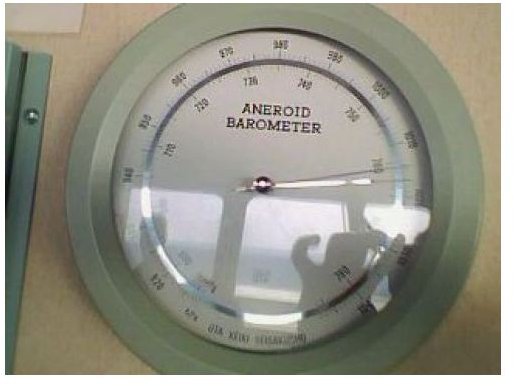The Mystery of Low Barometric Pressure
Low Barometer Readings
In this article we will take a look at the mystery of low barometric pressure and why does it not occur more commonly. Before delving deeply in the mysteries of barometric pressure, it’s best that we get familiarized with a brief history of the subject matter.
Otto von Guericke invented the vacuum pump in 1650 and proved that the existence of vacuum was a possibility. This led to realizing that air has weight and just as everything that has weight exerts pressure, so does air. Atmospheric Pressure is defined as the force per unit area exerted against a surface due to the weight of the air above it.
Standard Atmospheric Pressure
Under normal conditions, a cubic foot of air weighs approximately 1.25 ounces. The amount of pressure that air exerts at a particular point depends on the amount of air above it. This means that the amount of pressure at the top of a mountain is much less than on its foot. Pressure varies from place to place. If 1,013 mb (29.92 inches / 76 cms.) is taken as standard sea level pressure, any reading above this will be termed ‘High Pressure’ and a reading below this is termed ‘Low Pressure’
UNITS OF PRESSURE: 1.013 kg/cm2 = 1.013 bar = 1,013 mb = 760 mm of Hg = 76 cm of Hg = 29.92 in.
Low Barometric Pressure
As far as normal atmospheric pressure is concerned, it is not “normal” or “equal” at all places above the Earth’s surface even at the same heights. This could be due to several factors such as unequal heating and so forth. Because these conditions do not prevail frequently above the Earth’s surface, there are only few areas where low barometric pressure is existent at most times. Some of these areas are as follows, and can also be seen by clicking here: Tradewinds image, Peter D. Blanken, University of Colorado
Equatorial low pressure trough – this region refers to the area lying within 10 degrees North and South of the equator. The air in this area is wet and this is also the cause of relatively higher levels of rainfall in these areas
Subpolar cells – these are regions in North and South poles which are of low pressure and normally come under 60 degrees N/S latitude. In both these regions the effect of low pressure is due to the mixing of cold and hot air masses. In the north hemisphere the polar front is formed as a result of this meeting which results in cyclone storms, whilst in the southern hemisphere heavy snow results from this.
Effect of Gravity
Gravity is one of the important factors that influence air pressure and its distribution over the surface of the earth. We are pretty much familiar with the role of gravity in weight, so it should not be a surprise that the same force has a major role to play in the “air pressure” phenomenon as well, as per our initial description. When gravity compresses the air by pulling it towards the Earth’s surface, the pressure is generated, which is then acted upon by various other forces (as already discussed) including solar heating, pressure gradient etc., so account for the variation in this pressure both with altitude, and even within regions at altitude.
Relation to Marine Navigation
The above was more of a generic discussion about the low pressure areas, but this also has a significant relation to sailors and ships. As we have seen above, low pressure is associated with heavy wind movement, rains and all that, so its affect in sea areas can be easily imagined.
Low pressure situation would normally mean the occurrence of some of the below mentioned phenomenon
- Heavy rains
- Heavy seas
- Long swells
- Forceful wind conditions
All of the above do pose a danger to the safe navigation, or discomfort to crew members to say the least, not to mention the possibly damage or shifting of cargo which in turn could lead to ship capsize. Given below is a picture of the instrument used to measure high or low barometric pressure on board ships and other marine vessels.
Yet, thankfully enough, the low barometric pressure areas are only few and far between, as discussed above, so the show goes on and the marine navigators keep sailing their ships safely in the high seas.
References
Cornish, M.M. (1997) Maritime Meteorology. A&C Black Publishers
Kohl. W. (2007) The Layman’s Weather Guide according to Pogonips. AuthorHouse Publishers
Geography.About.com - The Basics of Pressure and Their Impact on the World’s Weather
Image: Barometer, Bright Hub Hubfolio page of oceanking.sk
